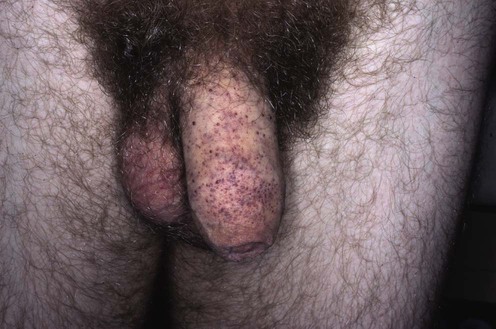Fabry disease

(From Lebwohl MG. The Skin and Systemic Disease: A Color Atlas, 2nd edn. Churchill Livingstone 2003, with permission of Elsevier.)

(From Lebwohl MG. The Skin and Systemic Disease: A Color Atlas, 2nd edn. Churchill Livingstone 2003, with permission of Elsevier.)
